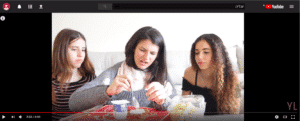From the moment we wake up in the morning we are exposed to advertisements. Aside from ads and marketing content on TV and radio shows, we’re inundated with ads on mobile, in the sidebar of a social media site, in the middle of a video or clip we’re watching, when logging into the app, and more.
But the main problem lies not in the advertisements, of which we are aware, but in advertisements that disguise, and not only on Purim. These advertisements are disguised with other types of content. Just like in cartoonist Jackie’s weekly drawing for a child, in which a character or an animal is hiding – in other content to which we are exposed, advertisements are hidden.
They used to say “it was written in the newspaper” as an indication of reliable and objective information on which to rely. In this day and age, it is common for articles to be adorned with headlines that purport to offer a solution to a common problem that many people are debating. Business companies know very well how to take advantage of situations of disinformation and confusion that exist among the public, flood the media with seemingly objective information and promote solutions while obscuring the truth and the source.
Marketing content or not? That’s the question
Marketing content is an article, image or mention, that appears in the media, and is similar in appearance to an interview, editorial or article, but is actually an advertisement for all intents and purposes. The advertiser pays the media entity to publish the content as an article. The publication of such marketing content is required by law to mark that gives an indication that it is an advertisement and not editorial content. Usually, there is indeed a markup for marketing content, but sometimes editorials are published, the date of which is published close to the launch of a new product or show, is not accidental.
Although marketing content is openly marked as such, sometimes the markup is small, and it is easy not to notice it. Indeed, in a recent survey conducted by Yifat Media Research, it emerged that only half of the respondents were aware of the existence of marketing content on news websites, despite the fact that they upload at least five articles with marketing content every day.
Give them signs – how do we know it’s advertising content?
- Read/check if it says “advertising content” at the top of the article.
- Check who wrote the article. If it says that the article is submitted “on behalf” or “the editorial board”, know that it is an advertisement. In journalistic work, credit matters and being noted as a writer will teach us something about its source.
- Examine which category on the site the article is associated with. If it belongs to “You might be interested” or “Web spaces,” it’s likely to be in an advertisement.
- If the article praises a particular product, it is likely that it is not a professional opinion but content.
 |
 |
 |
Covert commercials in TV shows and film
In the movie “Wayne’s World” you can see in an amusing segment how all the sponsors of the film are crammed into three minutes and laugh about it.
In a covert advertisement on a TV show, sometimes the product is completely hidden and sometimes partially. The purpose of covert advertising is to circumvent the antagonism that the viewer has towards advertisements by appealing to his subconscious in an advertising message.
 |
 |
Social Media Posts
A famous person who holds a certain product in an Instagram photo who uploaded or praises the product following the successful experience of using it in a Facebook post – does not share his opinion for free. Most likely, he is the presenter of the product or service or the promoter of an entertainment venue or cultural event.
The many Facebook groups play an important role in covert advertising channels. It’s easy for us to get a product recommendation when we feel we belong to the group we’ve joined. Even when group rules prohibit advertising, sometimes advertisements are published under the guise of a personal recommendation, the recommendation can be received from any member of the group, not necessarily from a celeb or opinion leader.
 |
 |
YouTubers
Countless YouTubers in various fields of knowledge: makeup, gadgets and clothes, receive very large exposures of hundreds of thousands of people and sometimes millions. Leading YouTubers are offered large sums of money to include in their activity a mention of a product or direct recommendation about it, and they also receive many free products from companies interested in advertising them.
However, the less attractive side of promoting through YouTubers sometimes involves exploitation, especially of teenagers. The YouTubers themselves do not always understand that they are being exploited, and the credit and exposure they receive as promoters of one product or another are interpreted by them as an appropriate reward for the effort.
  |
What the law says
An amendment to the Communications Law is currently under discussion, which will include a requirement for clear marking on marketing content on commercial channels. In any case, marketing content will be prohibited in news broadcasts and current affairs programs, docu and children’s content, and marketing content of harmful products will be prohibited.



